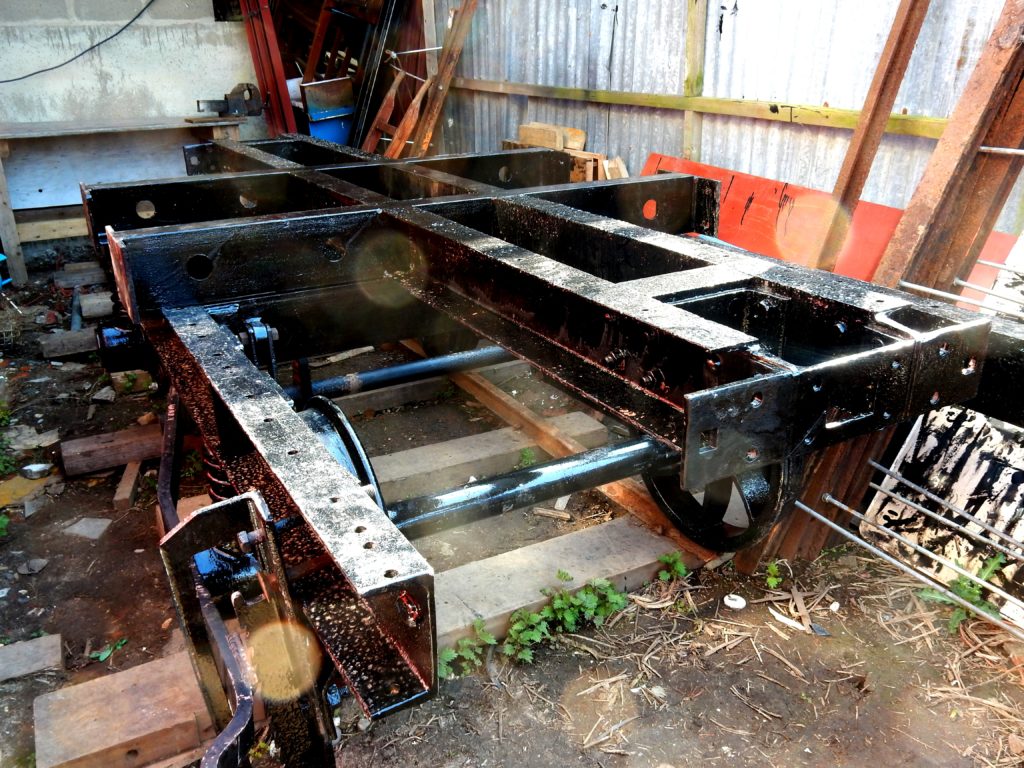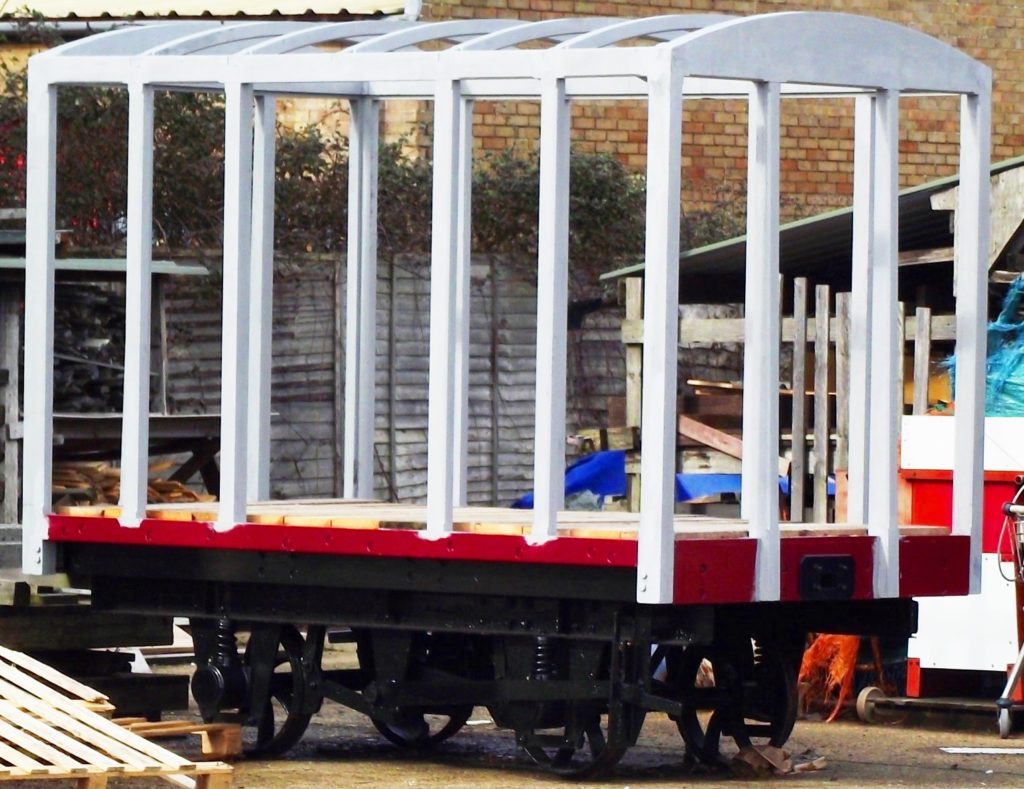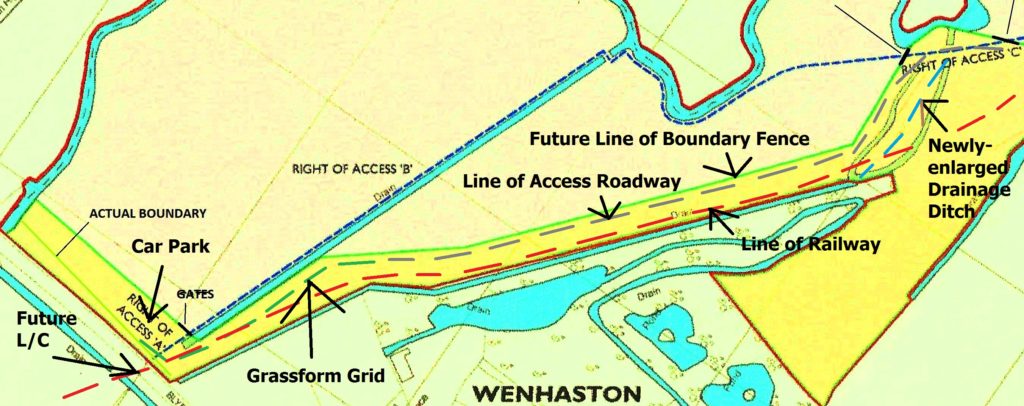As we are not allowed (yet!) to rebuild the railway, we have been getting in a bit of practice. Or so it would seem. In fact, the large amount of activity this week is more mundane – the SRT needs to create a new access roadway to the part of our land beyond the bridge site, because in the next few weeks the stock fencing along the new boundary with our neighbour we go in (shown on the map). It is, however, very good experience for the volunteers, and as usual we have taken the time to fulfil one of our charitable aims – to teach skills – in this case, on the 2-tonne 360 digger and 3-tonne dumper we hired from Harford Plant of Norwich (who kindly supplied the lads with a jar of very fierce home-made pickled onions, to keep us going).
The geotextile had already been laid, so we started by beefing up the causeway (which is a right-of-way), and then started to lay down the locally-sourced “reject stone” (flint) along the new roadway path. We had not appreciated just how wet and soggy the land still was, and driving even a half-loaded dumper through the morass, and squeezing it over a very small bridge, was hair-raising. The hardest part was the endless raking, with the large stones resisting all attempts to shift them. The structure of the roadway is complex, as at several points water crosses it – or lies over it – in winter: using local, inert, stone rather than (much cheaper) rubble, hoggin or crushed concrete will allow any flood water to pass through the road structure, so a dam cannot be created. We hope that our neighbours (and the Environment Agency) will appreciate this effort and attention to detail.
By dint of extraordinary effort, we completed about half of the road in four days, although by Saturday, it was getting disheartening as the dumper continually sank into the stone, meaning more stone and more raking – da capo, etc., etc. Still left to do is some of the car parking area by the lane (people are still getting stuck in what looks like perfectly good ground), and the other half of the road itself. If our planning permission had been granted, we would be very severely restricted in number of vehicles on our land – but as it has been turned down, we have the same rights as any other landowner.

Meanwhile, the distinctive SR post-and-rail fencing has advanced fast – only five panels now remain to the great joining-up (although there is still another section to do at the east end), and storm-damaged branches and ivy were dealt with on the fly. At the workshop, Dave brought Wagon 41 to the stage of allowing pre-assembly trial fitting: after a lot of careful measuring and checking, the whole structure can now be drilled and bolted together – it will begin to look like a proper wagon. (The Heritage Train took another leap forward over Easter – Van 40’s main structure is now completed by SOLD in Lowestoft: all the special-cut T&G for that, and the 2″ thick timber for the

floor of Wagon 41, are both on order from Bradnams of Haverhill)
We were visited by various interested parties: one joined SRT, one (the
Editor of the Halesworth and Beccles Bugle) offered SRT all the help he
could give (always nice to have the press on your side), and one just
wanted to know what all the work was about (when told that it wasn’t
rebuilding the railway, because currently we can’t, he said “pity”).
We had a referendum on whether to go to the community café – and the “we
want to get on with the work instead” faction (oddly) won by a mile. We
were so much missed that a small delegation came down to ask where we
were! Considering that there have been various derogatory comments about
our presence there, it’s nice that at least some Wenhaston residents
don’t think that the SRT charity volunteers “lower the tone” of their
café.
Next week there will be much less action – some tidying with the hire
machines, and a marathon session cleaning them (not easy where there is
no water laid on), then we will organise another work-week (our
volunteers’ dedication is legendary) to – we hope – finish that job (and
then get on with the other couple-of-hundred jobs still to do).

